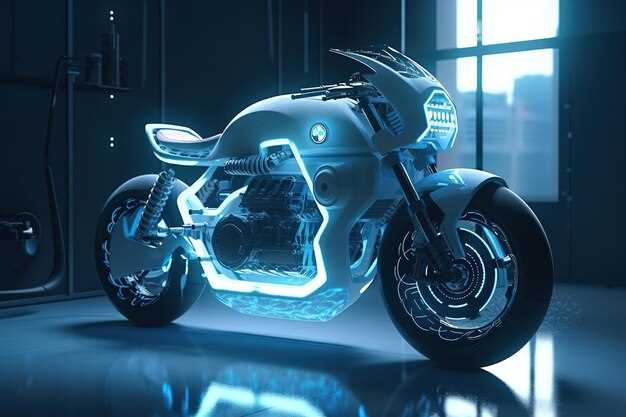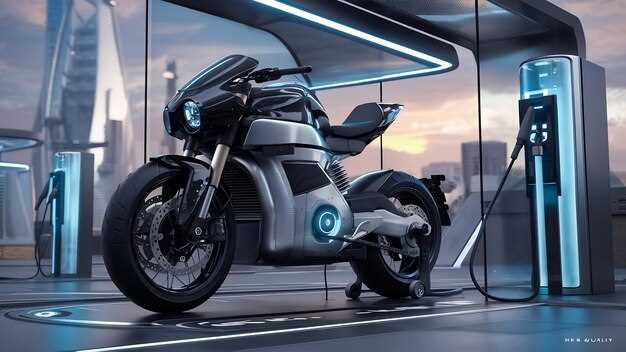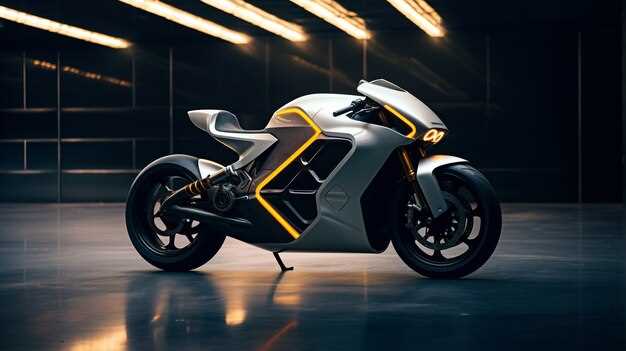
The electric vehicle (EV) market is experiencing rapid evolution, particularly within the motorcycle segment. As environmental concerns intensify and technology continues to advance, the future of motorcycle design is poised for considerable transformation. Electric motorcycles are no longer viewed merely as a niche market; they are becoming mainstream options for riders seeking sustainable alternatives without compromising performance and style.
Innovations in battery technology are at the forefront of this transformation. With ongoing research aimed at increasing energy density and reducing charging times, future electric motorcycles are expected to offer extended range capabilities that challenge the traditional limitations of internal combustion engines. The combination of lightweight materials and efficient powertrains will enable design engineers to create motorcycles that are not only faster but also more agile, fostering an entirely new riding experience.
In addition to improved performance metrics, the design aesthetic of electric motorcycles is likely to evolve. Manufacturers are increasingly focusing on user-centered design, ensuring that the motorcycles of the future are not only functional but also visually appealing. The integration of smart technology, such as advanced connectivity features and tailored ride modes, will make electric motorcycles more intuitive and personalized, leading to broader adoption among consumers.
Integrating Advanced Battery Technologies for Extended Range

As we look towards the future of electric motorcycles (EVs), one of the most critical developments is the integration of advanced battery technologies aimed at extending range. Traditional lithium-ion batteries have served as the backbone of electric mobility, but their limitations in energy density and charging speed necessitate innovative alternatives.
Solid-state batteries represent a promising innovation. They utilize a solid electrolyte instead of a liquid one, resulting in higher energy density and increased safety. This technology can potentially double the range of electric motorcycles, allowing users to travel longer distances without frequent recharging sessions.
Another avenue of advancement is the adoption of lithium-sulfur batteries. These batteries offer a theoretical capacity that is significantly higher than conventional lithium-ion batteries. By leveraging sulfur’s abundance and low cost, manufacturers can provide lightweight solutions that enhance the performance of future EV motorcycles.
Furthermore, the integration of fast-charging technologies, such as ultra-fast charging systems, will play a vital role in extending the usability of electric motorcycles. These systems can reduce charging times to just minutes, enabling riders to quickly recharge during long trips, thereby making electric motorcycles more convenient and accessible.
Battery management systems (BMS) utilizing artificial intelligence are also becoming essential. They optimize battery performance and longevity by predicting usage patterns, managing thermal properties, and ensuring safe operation. This technology maximizes the effective range of EV motorcycles, making them more reliable for everyday use.
In conclusion, the future of electric motorcycle design will heavily depend on the integration of advanced battery technologies. Innovations such as solid-state and lithium-sulfur batteries, along with fast-charging capabilities and intelligent battery management systems, will drastically improve range and user experience, paving the way for a more sustainable and efficient electric riding revolution.
Embracing Lightweight Materials for Enhanced Performance
The electric motorcycle (ev) industry is witnessing a significant shift towards the use of lightweight materials, driven by the pursuit of enhanced performance and efficiency. As manufacturers seek to improve the overall riding experience, adopting advanced materials such as carbon fiber, aluminum alloys, and titanium has become essential. These innovations not only reduce the overall weight of the motorcycle but also enhance its agility and handling.
Reducing weight is crucial for electric motorcycles, as it directly influences their range and acceleration. Lighter components allow for smaller and more efficient batteries, which can result in longer rides on a single charge. With the growing emphasis on sustainability, manufacturers are also focusing on materials that are environmentally friendly and recyclable, aligning with the eco-conscious mindset of electric vehicle (ev) consumers.
Moreover, lightweight materials contribute to better performance by lowering the center of gravity, which improves stability and cornering capabilities. This is particularly important for riders looking for an exhilarating experience without compromising safety. As trends in electric motorcycle design continue to evolve, the integration of these advanced materials will play a pivotal role in defining the future of the industry.
In summary, embracing lightweight materials is a key trend that enhances both performance and sustainability in electric motorcycle design. As innovations in material science progress, riders can expect motorcycles that are not only faster and more efficient but also more enjoyable and responsive to ride.
Incorporating Smart Technology for Improved User Experience

The future trends in electric motorcycle design are increasingly leaning towards the integration of smart technology, significantly enhancing user experience. As manufacturers aim to create motorcycles that are not only powerful but also intuitive, the incorporation of advanced connectivity features has become paramount.
One of the key elements in this evolution is the use of smartphone applications that allow riders to monitor various aspects of their motorcycle in real-time. These applications can provide information on battery life, charging stations, and even maintenance schedules, ensuring that users are always informed and prepared. Furthermore, these apps can enable users to customize their riding modes and receive performance analytics, tailoring the motorcycle’s behavior to individual preferences.
Another important trend is the integration of navigation systems directly into the motorcycle’s display. By utilizing augmented reality or heads-up displays, riders can receive turn-by-turn directions without taking their eyes off the road. This enhances safety while also providing a seamless riding experience.
Moreover, smart technology can improve safety features significantly. Features such as advanced collision detection systems and automatic emergency braking can prevent accidents. These innovations not only help riders feel more secure but also foster confidence in the electric motorcycle as a practical means of transport.
Additionally, the incorporation of durable, high-tech materials can enhance the overall durability and user experience. Lightweight composites combined with smart sensors can provide feedback on ride quality, allowing for real-time adjustments to suspension systems, which optimize comfort and handling.
In summary, the future of electric motorcycles lies in a marriage of innovative design and smart technology. By focusing on connectivity, safety, and personalized experiences, manufacturers stand to reshape how riders interact with their motorcycles, making each ride more enjoyable and efficient.
